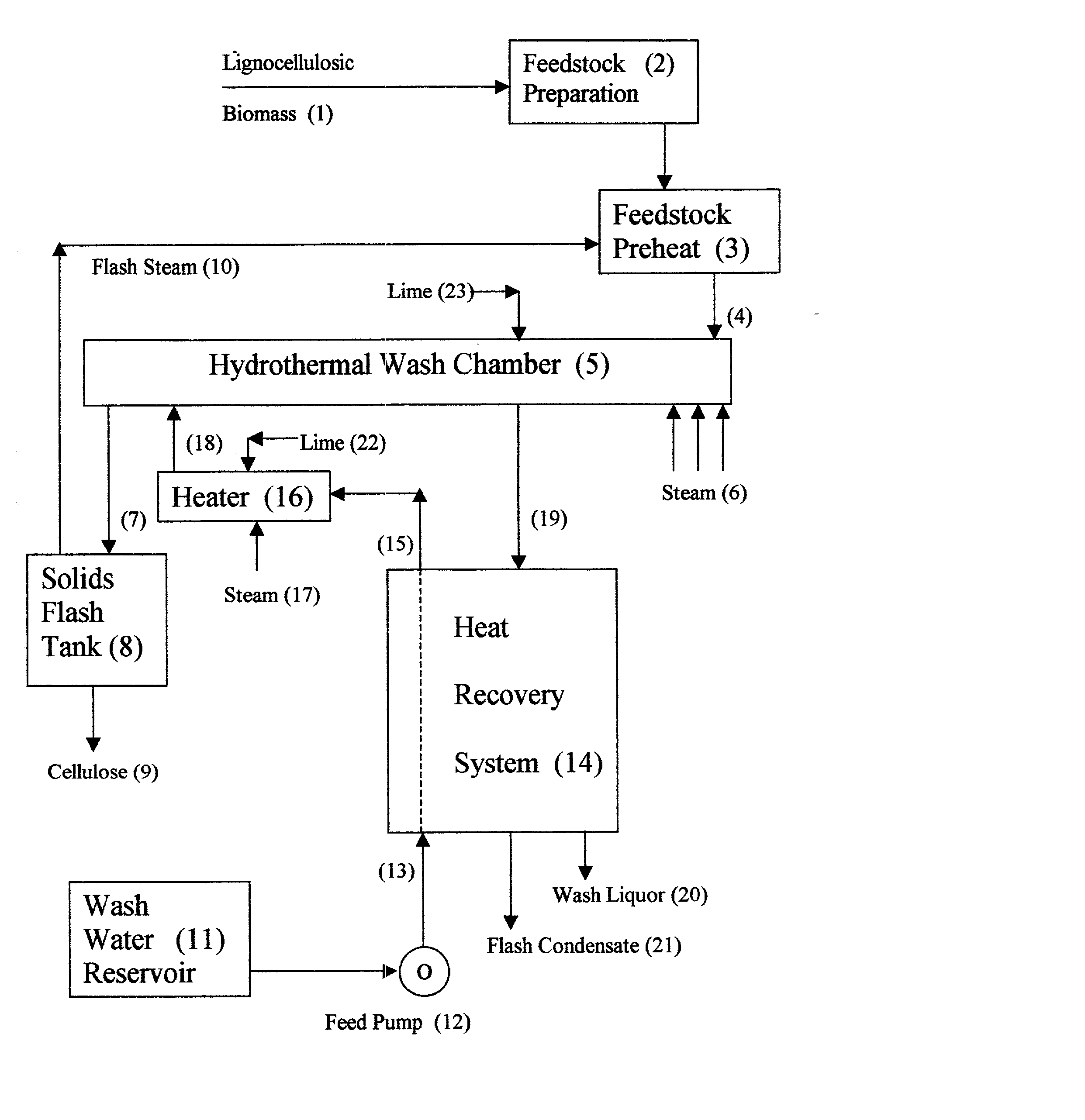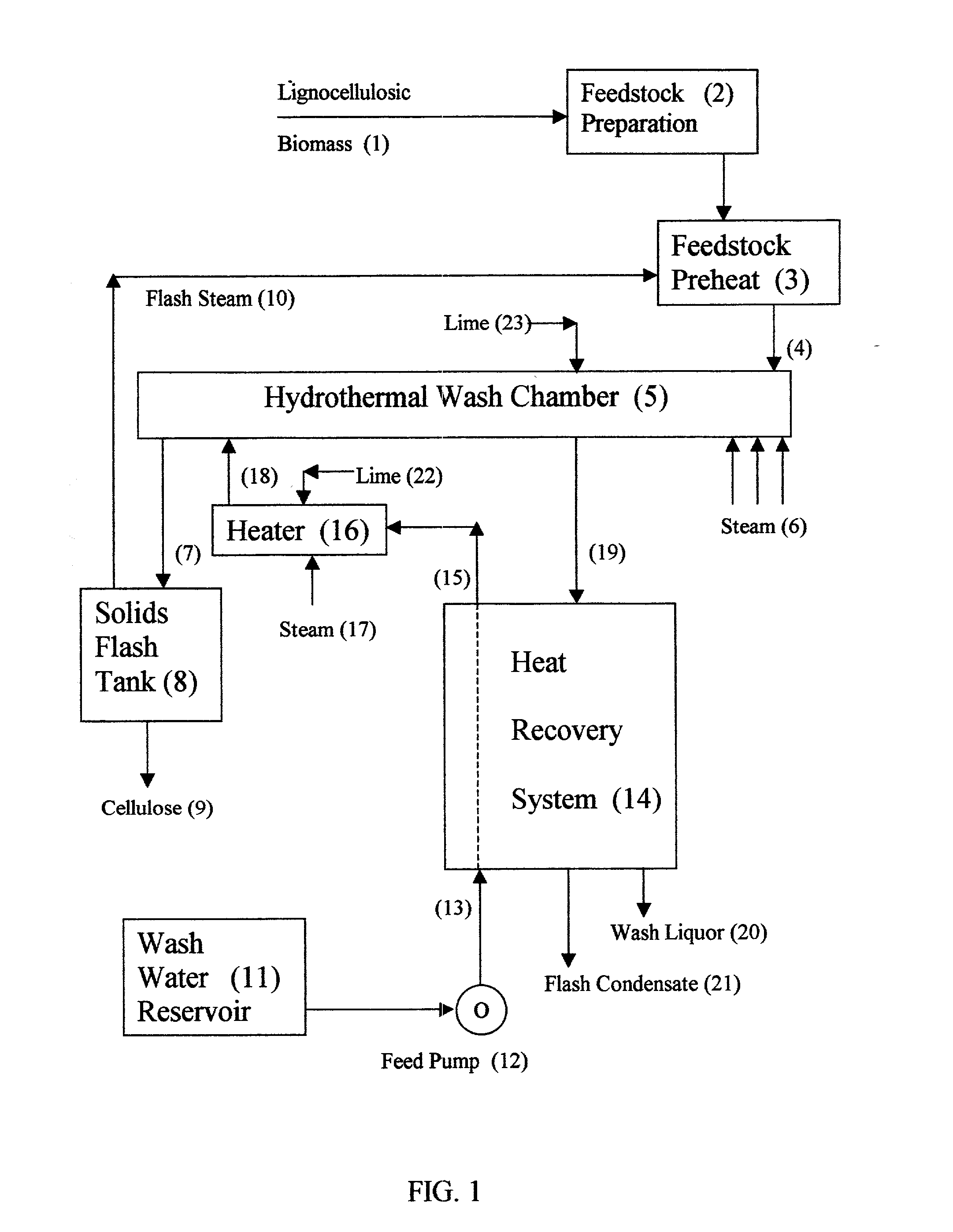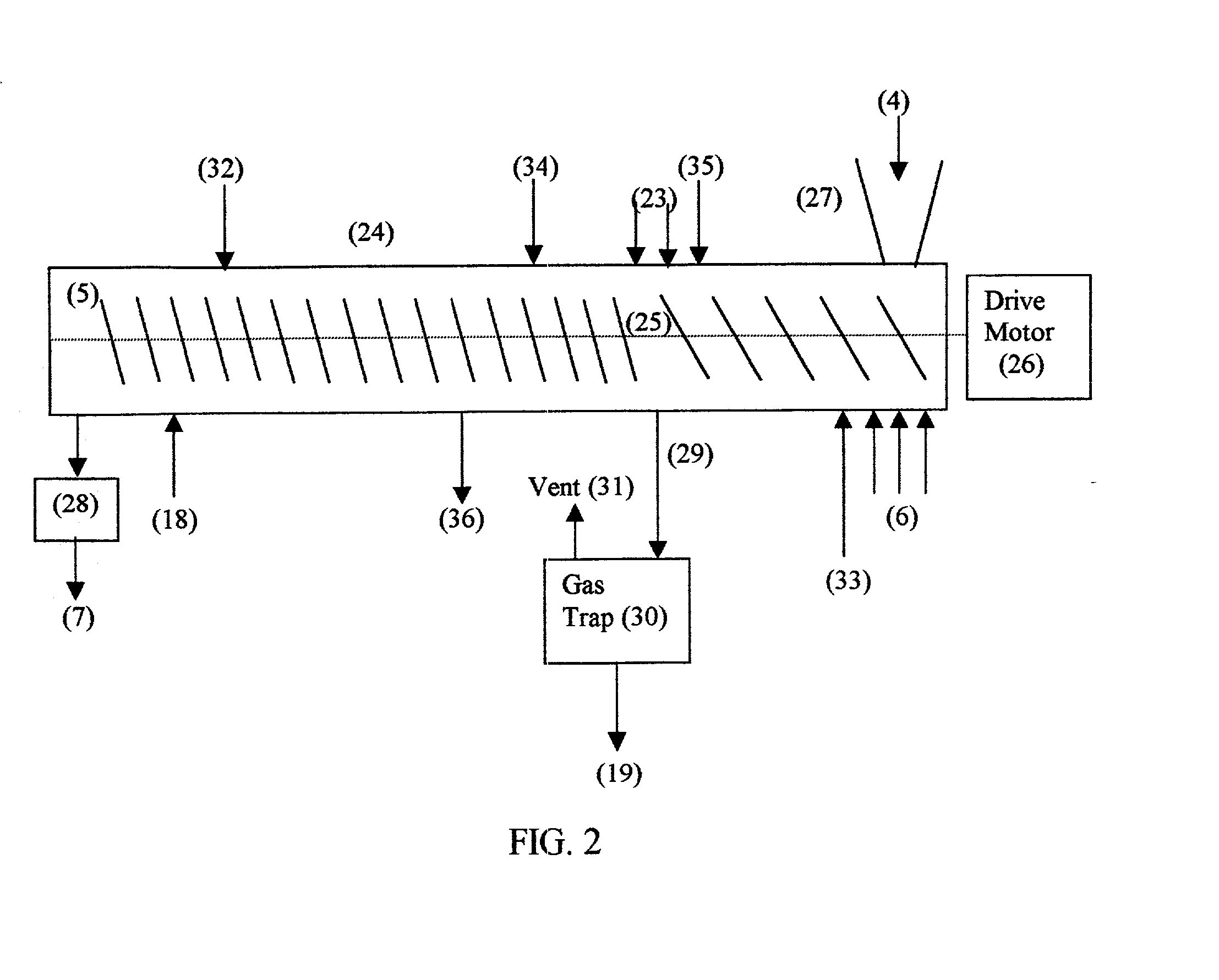Cellulose production from lignocellulosic biomass
a technology of lignocellulosic biomass and cellulose, which is applied in the direction of lignin derivatives, pretreatment with water/steam, applications, etc., can solve the problems of cattle not being able to digest wood with high lignin content, unable to effectively attack cellulose without prior treatment, and unable to separate cellulose from other biomass constituents
- Summary
- Abstract
- Description
- Claims
- Application Information
AI Technical Summary
Benefits of technology
Problems solved by technology
Method used
Image
Examples
example ii
PVT-19
[0080] First Vessel:
[0081] 12.0 grams (dry weight) feedstock. Initial Water Soak: 5 minutes at peak temperature of 200.degree. C. Washed with 370 grams of distilled water at 200.degree. C. followed by 865 grams of water at pH 12.8 with NaOH. Maximum temperature=218 C. Log severity=4.1.
[0082] Second Vessel:
[0083] All solid material from first vessel transferred to second vessel and soaked in a pH 12.8 solution with 150 cc of oxygen at STP and oxygen pressure of 45 psig. Maximum temperature=215.degree. C. Log severity=3.8.
[0084] Solid product: Recovery=31.4% by wt. of feed material
[0085] Recovery of original cellulose with composition.apprxeq.82%
[0086] 97.5% 6-carbon components (mostly cellulose)
[0087] 5-carbon components not detectable
[0088] Klason lignin not detectable
[0089] acid soluble lignin not detectable
[0090] 2.5% ash.
[0091] As can be seen, using the process of the present invention, the recovered cellulose consistently contains less then 20% lignin, as predicted, with t...
PUM
| Property | Measurement | Unit |
|---|---|---|
| temperature | aaaaa | aaaaa |
| temperature | aaaaa | aaaaa |
| temperatures | aaaaa | aaaaa |
Abstract
Description
Claims
Application Information
 Login to View More
Login to View More - R&D
- Intellectual Property
- Life Sciences
- Materials
- Tech Scout
- Unparalleled Data Quality
- Higher Quality Content
- 60% Fewer Hallucinations
Browse by: Latest US Patents, China's latest patents, Technical Efficacy Thesaurus, Application Domain, Technology Topic, Popular Technical Reports.
© 2025 PatSnap. All rights reserved.Legal|Privacy policy|Modern Slavery Act Transparency Statement|Sitemap|About US| Contact US: help@patsnap.com



